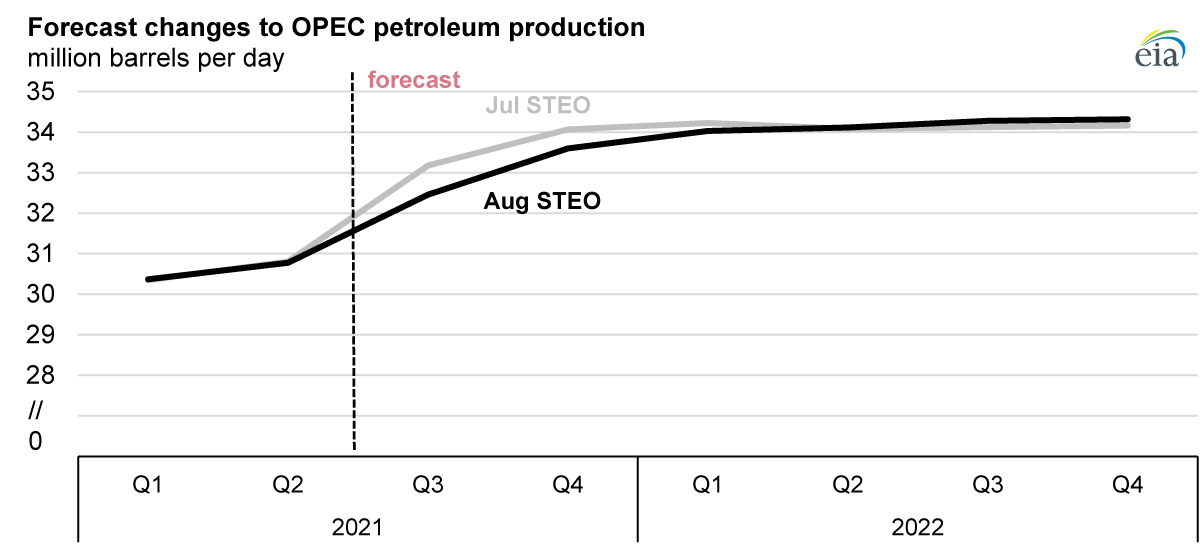In our August Short-Term Energy Outlook (STEO), we forecast that total world petroleum production will average 98.9 million barrels per day (b/d) in the second half of 2021 (2H21), down from a forecast of 99.4 million b/d in the July STEO. The change is driven mostly by forecast changes to petroleum production from OPEC and Russia as a result of the most recent OPEC+ agreement.

We decreased our forecast for world petroleum production in 2021 because of lower forecast production from OPEC, which is only slightly offset by increased forecast production from Russia. We forecast that global petroleum production in 2022 will average 101.8 million b/d—20,000 b/d less than we forecast in the July STEO.
On July 18, OPEC+, which includes OPEC and several non-OPEC members (including Russia), agreed to increase monthly crude oil production starting in August 2021. The latest agreement calls for total OPEC+ crude oil production to increase by 400,000 b/d each month until the previous production cuts are fully reversed, which would occur by the third quarter of 2022 if implemented at that rate. However, OPEC+ extended the production agreement to include monthly meetings through the end of 2022 so that it can adjust production targets as necessary.
In the August STEO, we forecast that OPEC total petroleum production will average 33.0 million b/d in 2H21, down 600,000 b/d from the July forecast for the same period. In the July STEO, we expected that OPEC would raise production by more than the group ultimately agreed to in order to meet global demand. We expect most OPEC countries will fully comply with the agreement during 2H21.
We revised our forecast for OPEC petroleum production in 2022 up by 40,000 b/d from the July STEO to average 34.2 million b/d. In 2022, we expect OPEC+ monthly petroleum production increases to total less than 400,000 b/d to avoid oversupplying the markets and pushing down the price of crude oil. However, we expect that some countries will produce more petroleum as a result of their increased baselines starting in May 2022, including the United Arab Emirates, Kuwait, and Iraq.
Our forecast assumes that existing sanctions against Iran will remain in place through the end of the forecast period. However, our forecast includes rising petroleum production from Iran over that period despite sanctions remaining in place. We assume that OPEC will not adjust petroleum production levels to accommodate this increase.
Despite changing the outlook for future petroleum production in the August STEO, our crude oil price forecast remains mostly unchanged from the July STEO.
Principal contributor: Matt French

Follow us on social media: